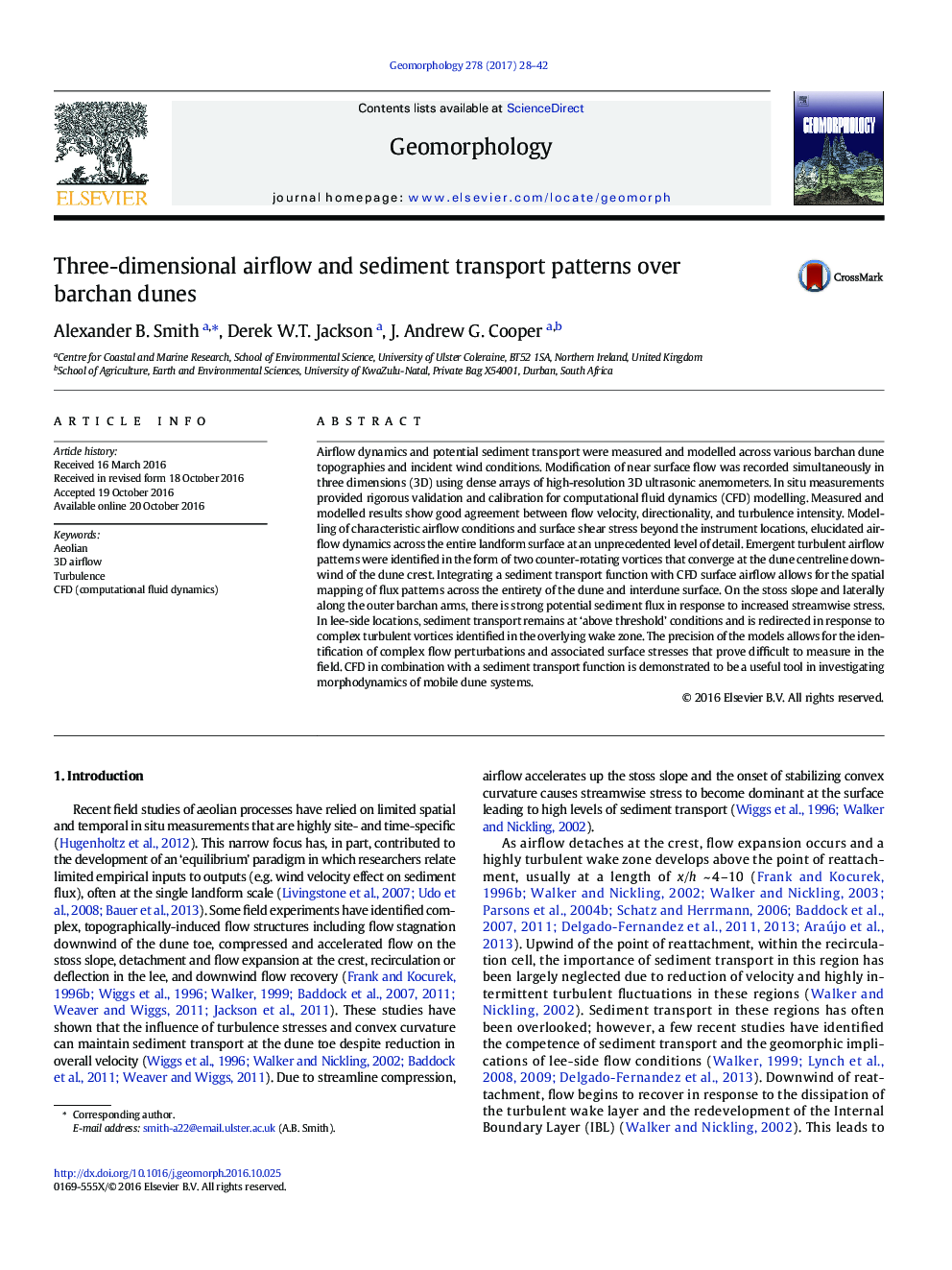| Article ID | Journal | Published Year | Pages | File Type |
|---|---|---|---|---|
| 4683821 | Geomorphology | 2017 | 15 Pages |
•Compares measured and modelled three-dimensional airflow over barchan dunes.•Modelled results showed good agreement with in situ measurements of velocity, directionality, and turbulence intensity.•Two counter-rotating vortices are identified in highly turbulent lee-side flows.•Lee-side sediment flux potential shows complex dynamics in response to coherent turbulent structures.
Airflow dynamics and potential sediment transport were measured and modelled across various barchan dune topographies and incident wind conditions. Modification of near surface flow was recorded simultaneously in three dimensions (3D) using dense arrays of high-resolution 3D ultrasonic anemometers. In situ measurements provided rigorous validation and calibration for computational fluid dynamics (CFD) modelling. Measured and modelled results show good agreement between flow velocity, directionality, and turbulence intensity. Modelling of characteristic airflow conditions and surface shear stress beyond the instrument locations, elucidated airflow dynamics across the entire landform surface at an unprecedented level of detail. Emergent turbulent airflow patterns were identified in the form of two counter-rotating vortices that converge at the dune centreline downwind of the dune crest. Integrating a sediment transport function with CFD surface airflow allows for the spatial mapping of flux patterns across the entirety of the dune and interdune surface. On the stoss slope and laterally along the outer barchan arms, there is strong potential sediment flux in response to increased streamwise stress. In lee-side locations, sediment transport remains at ‘above threshold’ conditions and is redirected in response to complex turbulent vortices identified in the overlying wake zone. The precision of the models allows for the identification of complex flow perturbations and associated surface stresses that prove difficult to measure in the field. CFD in combination with a sediment transport function is demonstrated to be a useful tool in investigating morphodynamics of mobile dune systems.
